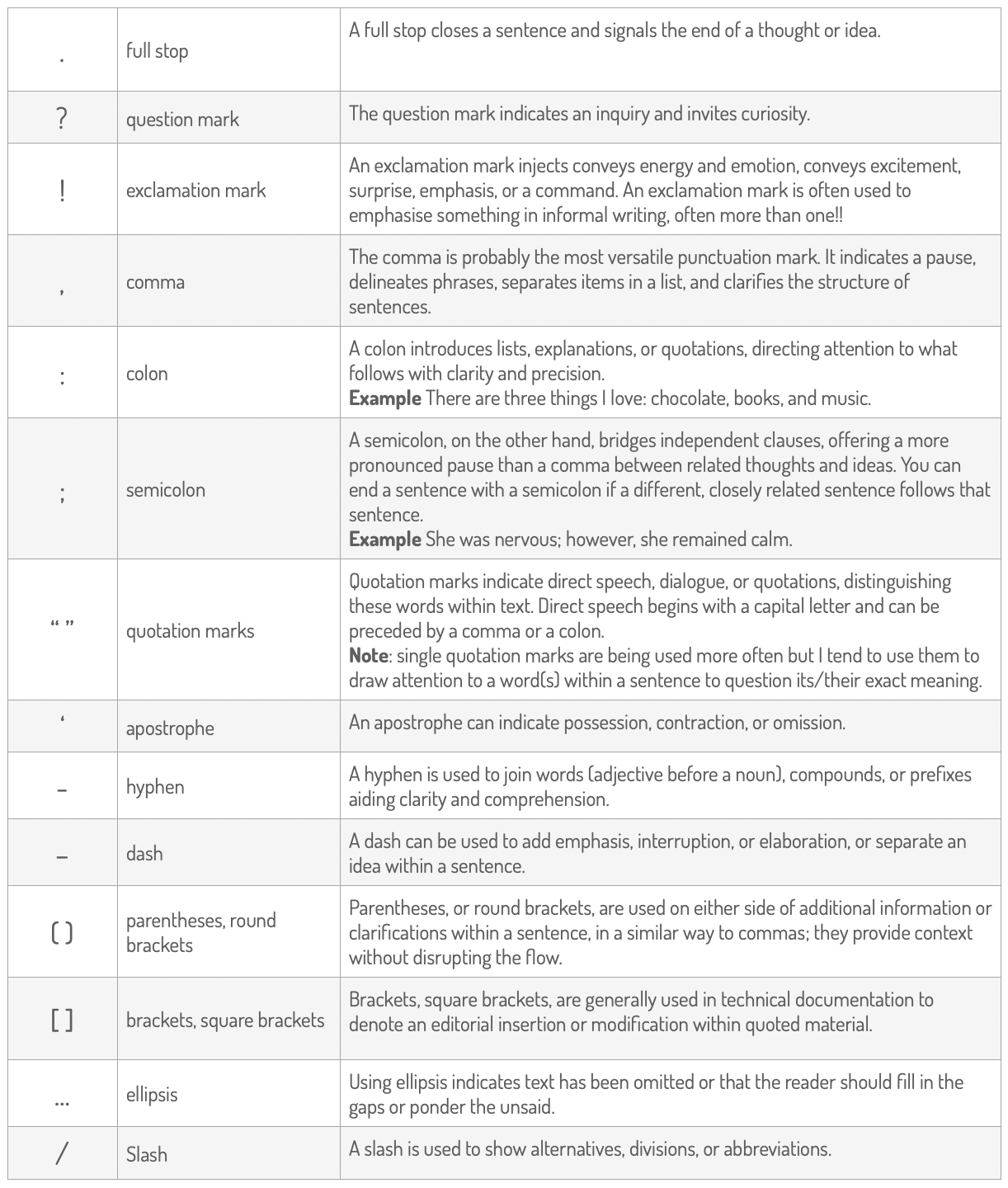Punctuation: a guide
Punctuation: the art of dividing sentences by marks. Simple really.
Punctuation indicates where to pause or breathe, and much more. Correct punctuation conveys your intended message to your audience; wrong punctuation may say something quite different.
Punctuation includes capitals, commas, question marks, exclamation marks, quotation marks, and full stops. All are important in ensuring your words are clear, understandable, and expressive.
If you think about it we use pauses and the pitch of our voice to help people understand what we are saying. Punctuation plays a similar role in our writing.
First, let’s look at four important punctuation rules
While there are many punctuation rules, here are a few really important ones:
All sentences must end in a full stop, question mark, exclamation mark, or a semicolon if followed by a closely related sentence.
Quotation marks, brackets, and parentheses should be used always be used in pairs.
If an explanatory element of a sentence isn’t essential or doesn’t change the meaning of a sentence if omitted, set it apart with commas.
Introductory elements can be used at the beginning of a sentence to provide background for the main part of the sentence; they should be separated by a comma.
So, from the humble comma to the enigmatic ellipsis, each punctuation mark plays a distinct role in shaping the rhythm and flow of written words. So how do you use them to write effectively? Here is a brief guide to the 14 punctuation marks.
Before you go, let’s take a closer look at the comma…
A comma can be used in many ways:
To separate words or elements in a list.
After introductory phrases.
To separate complete sentences joined by a coordinating conjunction (and, but, for, or, nor, so, yet).
On either side of text in the middle of a sentence that is not essential to the sentence’s meaning.
To separate two or more adjectives describing one noun.
But, have you heard of the controversial Oxford comma?
The Oxford comma, or serial comma, is used before the final conjunction (usually “and” or “or”) in a list of three or more items. Its usage is debated and often thought of as a matter of style, but it can help clarify the meaning of a sentence by preventing ambiguity in complex lists.
Example
I love my parents, my dog and my cat.
I love my parents, my dog, and my cat.
Without the Oxford comma in example 1 the sentence could be interpreted as you love your parents who are your dog and your cat. The same sentence with the Oxford comma is clearer. Those averse to the Oxford comma could turn the sentence around: I love my dog, my cat and my parents.
I like to use an Oxford comma but some of my clients don’t… it keeps me on my toes!
At the end of the day, punctuation helps with the dance!
All punctuation marks guide the reader and aid their understanding of the written words. They give the text rhythm, clarity, emphasis, elegance, and expression.
If you struggle with punctuation
You can use a punctuation checker like Grammarly, but don’t rely on it. For important documents it is always useful to have another person cast their eyes over your words.
Don’t let a misplaced comma or an errant semicolon detract from your words. If you need editing or proofreading support to ensure correct punctuation, enhanced readability, and a professional finish to your documentation, let me help your words shine.
I hope this helps xx
* * *
Cornerstone pa services is here to help YOU and YOUR business.
Do get in touch if you need editorial or admin support.


